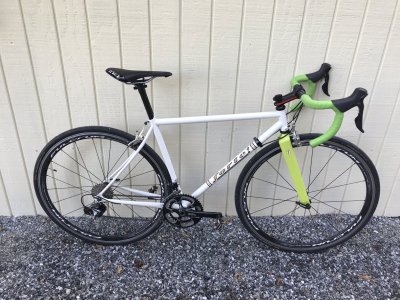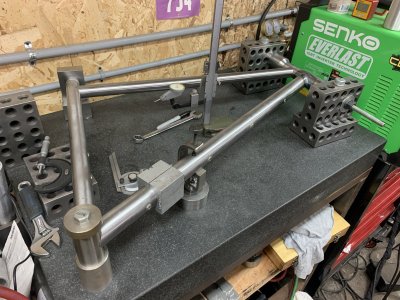Xyphota
Ultra Member
Inspired by @David_R8 's popular shop thread, and especially @eotrfish's gorgeous fly reels thread, this thread will contain mostly bicycle related projects. Over the last few months, most of my shop time has been spent fabricating up jigs and fixtures that will aid in the fabrication of a bicycle frame. I know there are a few members on this site that have dabbled in bicycle framebuilding before, so I look forward to their feedback and constructive criticism.  I myself worked as a bicycle technician in the biggest bicycle shop in Canada for ~10 years, full time in the summers, and part time during the rest of the school year.
I myself worked as a bicycle technician in the biggest bicycle shop in Canada for ~10 years, full time in the summers, and part time during the rest of the school year.
My first frame is going to be a straight rip-off (no shame) of this bike: https://ebscycle.com/vokka/
Every serious bike frame manufacturer will provide most of the geometry of their frames to potential customers for sizing reasons, and also to give the more savvy cyclist an idea of what the bike will ride like.
To start, I am using a bicycle specific CAD program called... you guessed it -- BikeCAD! This program is primarily intended for use by framebuilders constructing bicycles out of tubing. You can very quickly put in the geometry of the bike you want to build and spit out a drawing that will provide all the information you need to get started. The drawing I will be referencing is below. One might be quick to point out that there is a fair amount of information missing, but that will be addressed in the near future.

My first frame is going to be a straight rip-off (no shame) of this bike: https://ebscycle.com/vokka/
Every serious bike frame manufacturer will provide most of the geometry of their frames to potential customers for sizing reasons, and also to give the more savvy cyclist an idea of what the bike will ride like.
To start, I am using a bicycle specific CAD program called... you guessed it -- BikeCAD! This program is primarily intended for use by framebuilders constructing bicycles out of tubing. You can very quickly put in the geometry of the bike you want to build and spit out a drawing that will provide all the information you need to get started. The drawing I will be referencing is below. One might be quick to point out that there is a fair amount of information missing, but that will be addressed in the near future.



